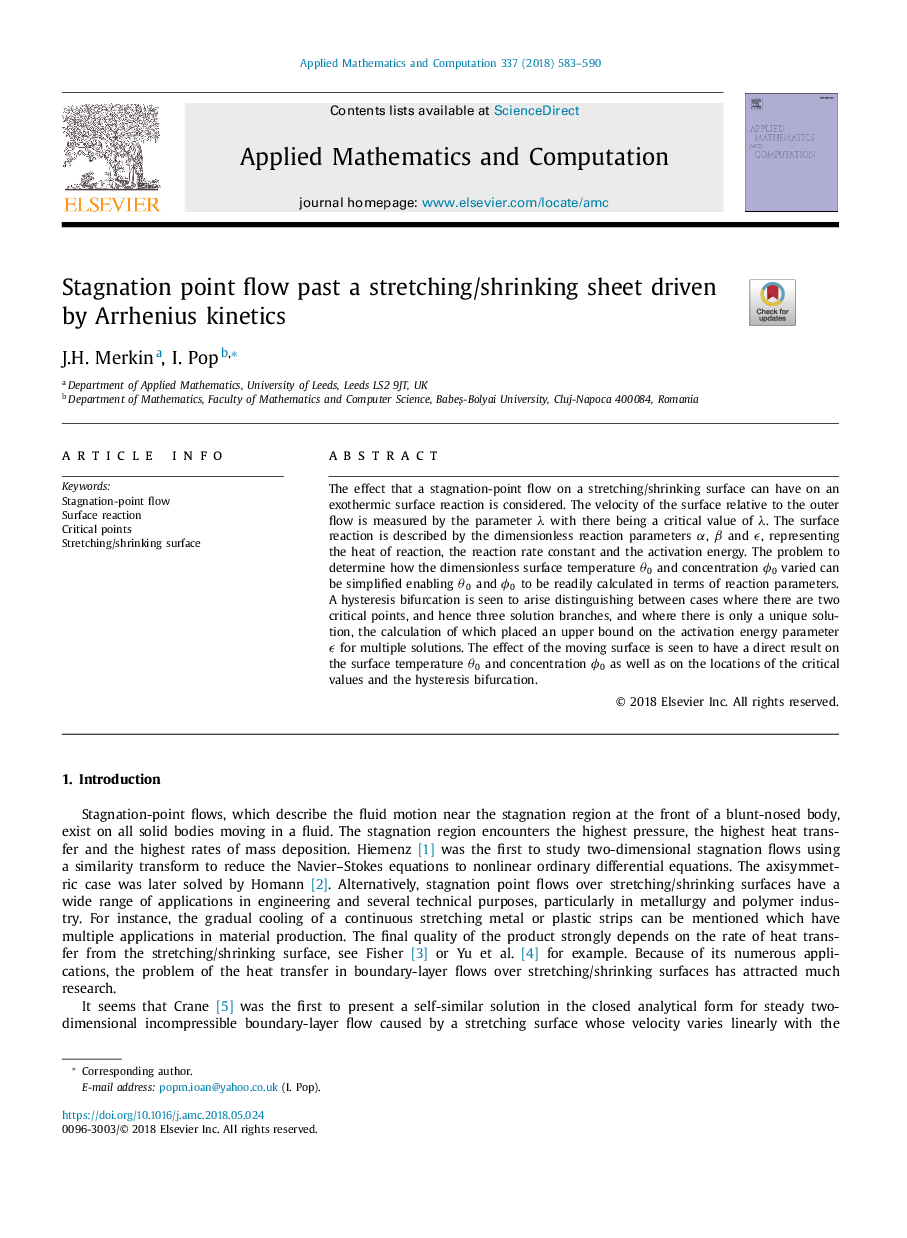| Article ID | Journal | Published Year | Pages | File Type |
|---|---|---|---|---|
| 8900776 | Applied Mathematics and Computation | 2018 | 8 Pages |
Abstract
The effect that a stagnation-point flow on a stretching/shrinking surface can have on an exothermic surface reaction is considered. The velocity of the surface relative to the outer flow is measured by the parameter λ with there being a critical value of λ. The surface reaction is described by the dimensionless reaction parameters α, β and ϵ, representing the heat of reaction, the reaction rate constant and the activation energy. The problem to determine how the dimensionless surface temperature θ0 and concentration Ï0 varied can be simplified enabling θ0 and Ï0 to be readily calculated in terms of reaction parameters. A hysteresis bifurcation is seen to arise distinguishing between cases where there are two critical points, and hence three solution branches, and where there is only a unique solution, the calculation of which placed an upper bound on the activation energy parameter ϵ for multiple solutions. The effect of the moving surface is seen to have a direct result on the surface temperature θ0 and concentration Ï0 as well as on the locations of the critical values and the hysteresis bifurcation.
Related Topics
Physical Sciences and Engineering
Mathematics
Applied Mathematics
Authors
J.H. Merkin, I. Pop,
